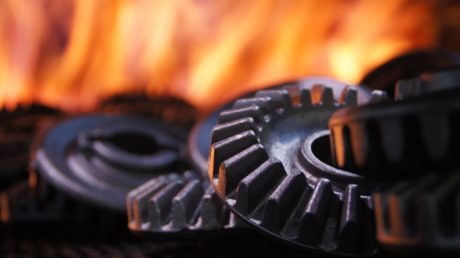 The scenario of the Coatings and Heat Treatments sector is characterized by high technical-scientific liveliness and by unprecedented dynamism.
The scenario of the Coatings and Heat Treatments sector is characterized by high technical-scientific liveliness and by unprecedented dynamism.
The galvanic sector might be absent-mindedly considered as mature, without relevant innovation and growth margins, at least by chronologic order. Actually, it represents a global market worth 14.5 billion Euros, with a Compound Annual Growth Rate (CAGR) by 3.5% in the 2017-2026 period and with Asia-Pacific that is steeply rising with 4.6%. The galvanic sector is strictly connected with the technological challenges of two driving and rapidly evolving industrial fields: electronics and automotive. Due to the properties of materials and surfaces, they can face the extreme miniaturization challenges to the extent of the physical limits of device compactness and information density, as well as the extreme lightening of components, without giving up aesthetical and functional performances. The growth of the galvanic sector will be constantly polarized towards these two fields, expected to absorb 65% of the turnover of the world galvanic industry within 2026.
The hard coating sector is younger and represents a lean market, even if rapidly growing with 8% yearly CAGR and an expected market value for 2026 amounting to 1.3 billion dollars. Hard coatings, mainly implemented with PVD processes, thanks to high efficiency and to low maintenance costs, are applied in numerous ambits of the manufacturing industry and of transports, in the Asia-Pacific region they are prevailingly used for the coating of cutting tools and as decorative coatings.
The global market of chemical surface treatments represented a value of 4.8 billion dollars in 2016 and features a Compound Annual Growth Rate by 7.8%; it covers a broad applicative ambit, whose driving sectors are automotive, industrial plants and machinery, metallurgical and aerospace industry.
The automotive market is driving also for the field of heat treatments and nano-composite materials, requiring the use of multifunctional ferrous and non-ferrous alloys, increasingly light and performing. The heat treatment sector, according to the estimates, is constantly growing with CGAR by 6% until 2021; the Asia-Pacific area mostly shares in the market size. New nano-composite materials constitute the sector with the highest growth rate, with CAGR by 21.9% in the 2015-2022 period, the main players belong to the US area but an important role is played by China and South Korea, too.
The technical-scientific liveliness of the latter sector is witnessed by an exponential growth of the number of patents and innovations, this boosts us to plan a more dynamic future for Europe, where old and new technologies have been conceived and developed. Finally, global dynamics provide us with a useful indication: a type of economy prevailingly based on intangible services and products might seem a refined and elegant solution, but it is not self-sufficient. The manufacturing sectors of consumer products with high technological content must have strong representatives also on the European territory because they are driving for the providers of enabling technology: materials, treatments, finishes …



